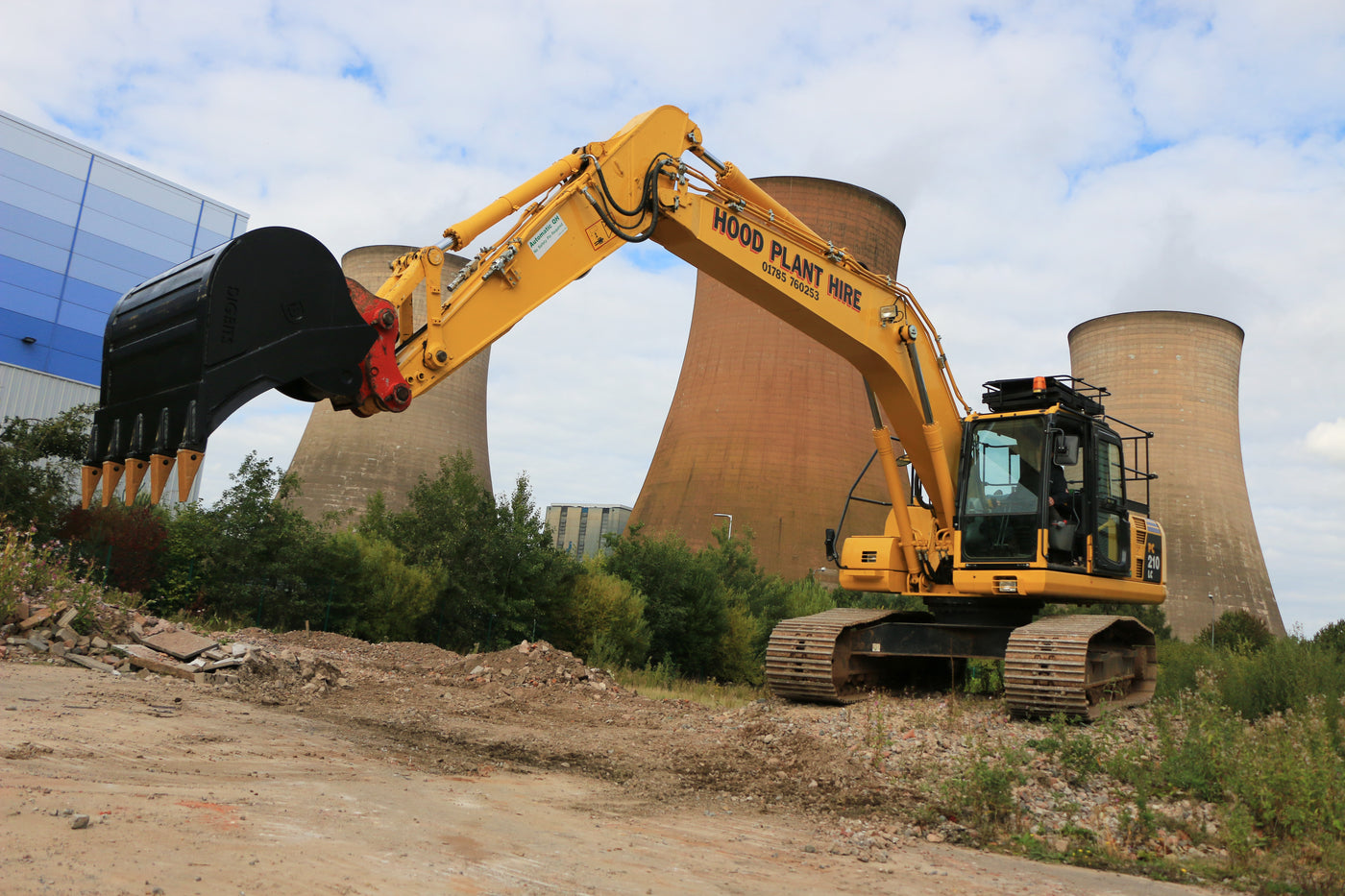In general, for safety reasons on work sites, excavators should only be used by fully trained operators, who are familiar with the technical and safety aspects of this type of machinery.
However, there are cases, on DIY hires for example, where this is not the case, and the hints provided on this page may be of use. These should be read in conjunction with the safety instructions provided by the manufacturer and/or hirer of the machine and are by no means intended as a full set of instructions and guidelines.
Basic Hazards to consider:
- Terrain & Stability. This is key for any excavator, but smaller mini and micro excavators are generally the least stable. If you are working on gradients or on potentially soft ground, you need to be aware of stability limits.
- Reach & Stability. Excavators are less stable the further they reach (upwards or outwards) and working on cross gradients rather than flat ground.
- Slew Angle & Stability. Excavators will have lower load capacity across the tracks than along them - so take care when slewing.
- Utilities. Be aware of underground pipes and cables on site. Ensure overhead hazards like power lines are noted and avoided.
- Cave-ins. Unsupported trenches and earthworks are extremely dangerous. Collapses on even fairly shallow trenches can be fatal. Do not have people working in earthworks. Do not leave them unfenced.
- Safe working zone. Never allow pedestrians or workers into the swing arc of an excavator.
- Ejection and Entrapment: Always wear a seatbelt to ensure you are not ejected from the safety cab structure of the excavator.
- Falls. Take care when climbing into the cab or, on larger machines, onto the engine and service bay.
Basic Controls
The basic operating controls: The digging control of a typical hydraulic excavator.
Experienced Operator
Watch an experienced operator at work: Loading tipper trucks with a 20 tonne excavator.



